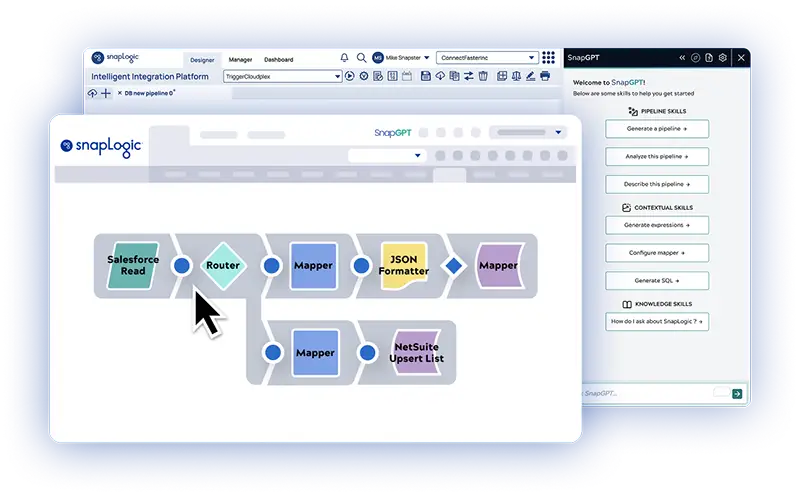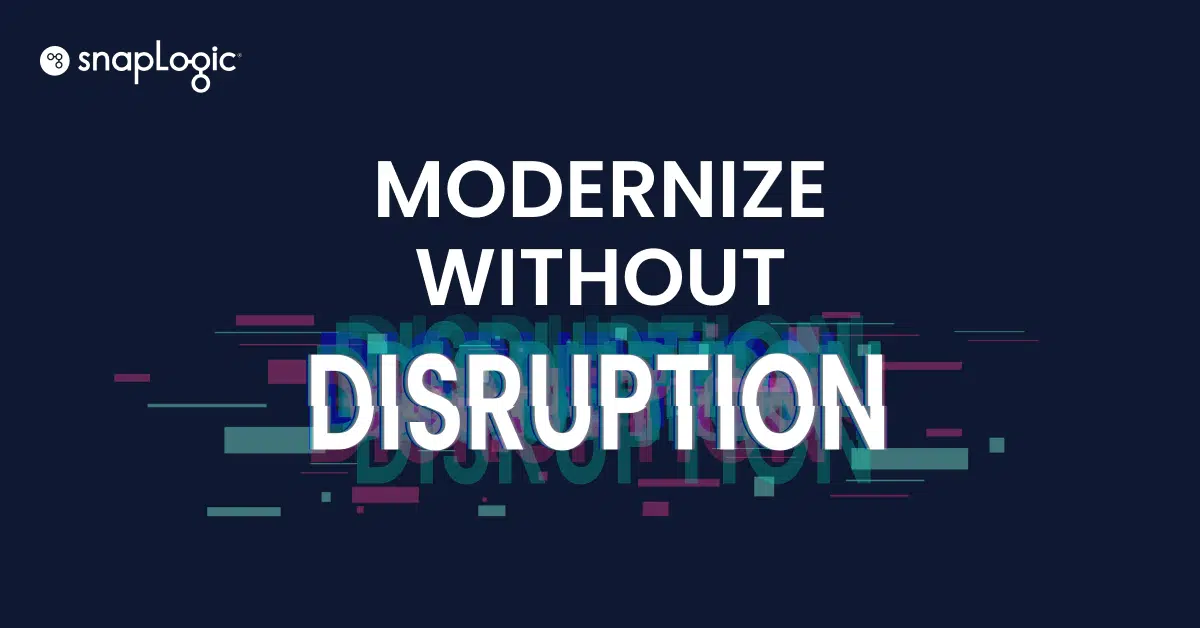In the 2021 State CIO survey, 49% of CIOs mentioned that they had strategies in place to migrate legacy applications to the cloud.
The cloud offers scalability, cost-effectiveness, and efficiency. But a ‘moving to the cloud’ or ‘cloud-first’ initiative can cause a lot of disruption in the company’s processes.
To make their ‘cloud-first’ strategy a reality, IT leaders need to adopt an approach that causes minimal disruption. They also want to make sure their cloud strategy produces a positive ROI.
To achieve these goals, there are two common cloud migration approaches to consider: lift and shift and modernization.
Both of these approaches can be used to migrate a company’s IT ecosystem to the cloud. IT leaders often ask whether lift and shift or modernization is the best approach for them when moving to the cloud. The simple answer is: it depends. Let’s explore both approaches in detail.
What Is Lift and Shift Migration?
Lift and shift migration is an approach to migrating to the cloud where your databases, applications, and processes are taken (lifted) from on-premises servers and moved (shifted) to the cloud.
No major changes are made to any of the databases, applications, or processes. Some applications are moved as is, and some are moved with minor adjustments. These minor adjustments include configuring your virtual machines and your apps to work together. Popular cloud hosting services such as AWS, Azure, and Google Cloud offer detailed guides on how to configure and deploy your apps on their servers.
Your data pipelines continue to function the same way. Your data warehouses or lakes that store data, and the apps that process data, exist on cloud-based servers after the migration.
Think of lift and shift as moving from one house to another. You pack your things and go to a different place. Everything from your kitchen utensils to your furniture remains the same — they’re just placed in a different house after the move.
Pros of Lift and Shift Migration
A lift and shift strategy is suitable for companies that use many custom-built legacy applications and do not want to change anything about their processes or tech stack. A lot of investment goes into creating custom-built applications and training your employees to use them. With a lift and shift migration, you protect that investment. It is the simplest cloud migration strategy. Nothing changes for the end user, and the business keeps using the same workflow, logic, processes, and data. You only change the environment where the data and apps are housed.
Some of the pros of lift and shift migration include:
- Speed: Moving copies of your applications and testing them is a fast process because the application architecture and code require few to no changes.
- Low upfront cost: Lift and shift migration doesn’t take away much developer time and resources. You sign up for a cloud services provider, configure application and database servers as needed, and start moving copies of your apps to the cloud. Most cloud service providers use a pay-as-you-go pricing model, so the upfront costs are low.
Lift and shift migration can be a gateway migration of sorts — you move to the cloud without changing anything and then slowly start implementing new processes and adopting new software. It opens up paths to modernization.
Cons of Lift and Shift Migration
The biggest downside to lift and shift migration is that not all of your legacy apps were built to be hosted on virtual machines. Custom apps that were built for on-premises servers may require significant modifications to be moved to the cloud and still function as intended without security issues. Even if you move your legacy apps to the cloud perfectly, the latest cloud-based SaaS platforms may outperform your stack.
Some of the disadvantages of lift and shift migration include:
- Technical debt: Your legacy applications weren’t meant for the cloud, so they need ongoing code maintenance to stay compatible. You benefit from low upfront costs but end up spending more on maintenance (as compared to modernization) in the long term.
- Security risks: Apps built for on-prem use may not be able to handle cloud-based security risks. On-prem and cloud-based security threats are different, so you will need new tools and training to mitigate new threats.
Modernization: A Lift and Shift Migration Alternative
Modernization means converting legacy on-premises applications into cloud-based applications. The process involves a lot of development work and is more than just making a few minor adjustments.
You retool big segments of the underlying code, so the final product is a highly modified and improved version of the original app. You also change processes, database types and structures, and workflows as needed. Your data pipelines and technology ecosystem change significantly after modernization, allowing you to tap into all the advantages the cloud has to offer.
While lift and shift migration is like moving from one house to another, modernization is like remodeling a house. You knock down a few walls, turn the guest room into a home office, maybe make the kitchen and bathrooms bigger, and you end up with a remodeled house that looks very different from its old version.
Pros of Modernization
Many companies prefer modernizing their entire architecture instead of using the lift and shift method. Some of the main advantages of modernization are:
- Enhanced capabilities: With a modernized stack, you can introduce new features in your apps, new processes, and new workflows and improve your overall ecosystem for better employee performance and improved customer experience. In lift and shift migration, your capabilities remain the same. Modernization allows you to improve every aspect of your IT ecosystem.
- Reduced maintenance costs: Once applications, databases, and other data sources are moved to the cloud, the capital and operational expenses (CapEx and OpEx) of running and maintaining them are dramatically reduced.
Cons of Modernization
As with remodeling a house, modernization is a resource- and cost-intensive endeavor.
- High upfront costs: 32% of IT leaders think of upfront cost as a challenge to IT modernization, according to Insight. The resources spent on taking apart your applications, databases, and processes and building them anew will likely be high.
- Complexity: Exactly the same amount of IT leaders as above (32%) think of cloud complexity as another big hurdle for modernization. You need an entire team of capable developers to study every aspect of your IT architecture so that they can refactor applications, data sources, and integrations and optimize them for the cloud. You are not just moving a copy of your legacy apps to the cloud; you are rebuilding your whole ecosystem.
The Path to Modernization
Even if a company uses lift and shift migration, it will eventually need modernization for its tech stack. That’s because IT modernization represents a move away from traditional systems and toward more innovative and automated solutions.
The path to modernization doesn’t have to be daunting. Modernization can be approached in phases, so there is minimal disruption in the company’s day-to-day operations. By modernizing your tech stack in phases, the devs and the operations team will have enough time to build and deploy. Also, the end users will get enough time to adopt new applications and processes.
First, IT leaders need to have business objectives and use cases in mind when refactoring the enterprise architecture and infrastructure. By identifying priorities, IT leaders can create a future state of their architecture to show how applications and integrations are mapped out. They will be able to determine which applications and integrations to modernize first (in some instances, companies may need to establish a hybrid environment) and create a project timeline to kick off the modernization initiative.
Additionally, IT leaders will need to identify which resources (people or technology) they will need to move forward with the modernization plan. IT leaders, in particular, need to understand how the applications and systems are connected with each other and how those integrations will be mapped out in the future state.
In many cases, companies will have multiple integration tools — some that are compatible with on-premises data sources and others that may only be for cloud applications. If IT leaders take a phased approach to modernizing their architecture, they will need to move their ecosystem to the cloud one component at a time, all the while making sure none of the business processes break. They may consider an integration solution that can handle native cloud, on-premises, and hybrid integrations, so it is easy to create automated workflows and integrate different components together.
How SnapLogic Can Support Your Path to Modernization
SnapLogic is an integration platform that serves as a hub for all applications and databases in an organization’s ecosystem. It helps you overcome the two biggest challenges with modernization: cost and complexity.
SnapLogic is a no-code solution to integration, which means you can build new integrations and workflows using drag-and-drop features on an interactive platform with no coding needed. That means the time and resources you’d otherwise spend on your integration architecture are minimized, and the complexity associated with building custom integrations is reduced significantly. When using a phased approach to modernization, you will need your legacy apps to work with your new systems and databases and comprehensive API management as you create new components. SnapLogic removes all blockers between your new and old systems and gives you complete control of your data pipelines. It allows you to modernize your IT ecosystem without any disruptions.
Request a demo today to learn how SnapLogic can accelerate your path to modernization.









